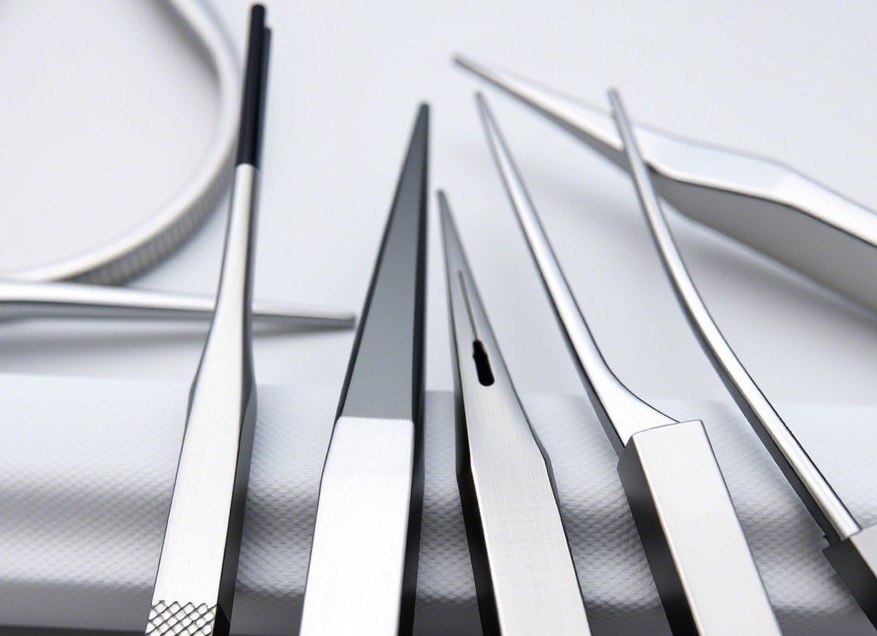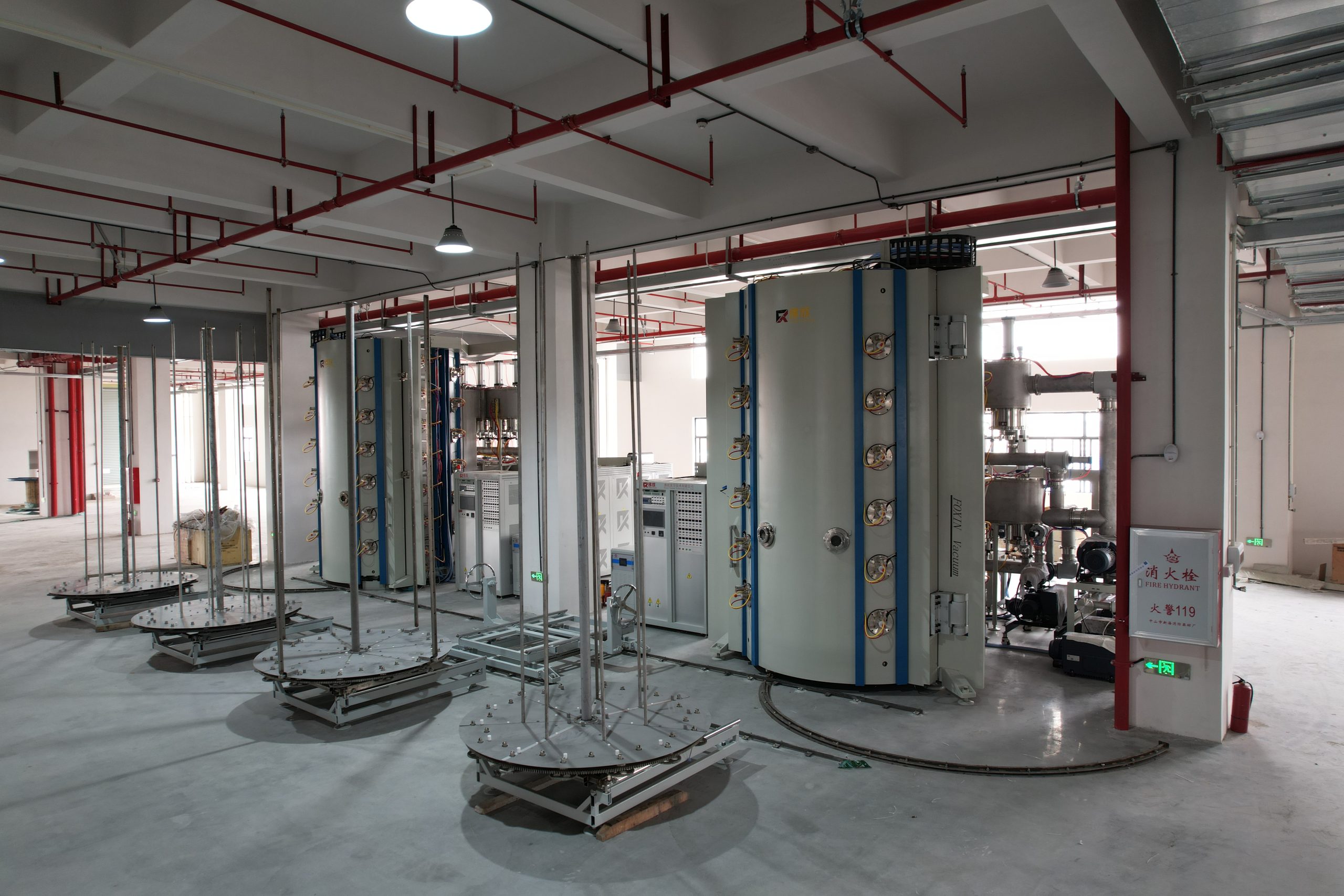PVD Coating Machines: Boosting Medical Device Durability
The performance of medical devices is critical to patient safety. Surgical knives must stay sharp for a long time. Orthopedic implants need to remain stable over years. Diagnostic equipment has to be consistently accurate. Behind these demands, one key technology quietly does its job: the PVD coating machines. It deposits a thin but tough protective layer on the surface of device, ensuring that the device can function normally even in harsh conditions.
What Is PVD Coating Technology
PVD coating (physical vapor deposition) , is a process that puts a thin layer of metal or compound onto an object’s surface using high heat or sputtering. Think of it as giving medical tools a tough, thin shield. This layer is super thin, like nanometers to micrometers, but it makes surgical blades sharper and implants last longer.
The main tool, PVD coating machines, use vacuum technology to create a clean, dust-free space so the coating sticks evenly. Common methods include thermal evaporation and dc sputtering. In dc sputtering, high-energy particles hit a target material, sticking it to the tool’s surface. This can make the coating crazy hard, like 2000 to 3000 HV (Vickers hardness, a way to measure how tough a material is).
Why’s this a big deal for medical stuff? Tools get used a ton and need to hold up in the body for a long time. The PVD process controls the coating just right, making sure the gear is both tough and safe for the body.
How PVD Improves Medical Devices
Hardness & Wear Resistance
Surface hardness affects how long medical devices last. PVD coating creates a super hard protective film, way tougher than regular steel. For example, titanium nitride coating can make surgical scissors 50% more resistant to wear, cutting down on damage and replacements. Rf sputtering ensures the coating is even and performs reliably.
Corrosion and Body Fluid Resistance
Medical devices often deal with saline or body fluids, and corrosion is a big issue. Metal plating forms a tight protective layer, reducing corrosion rates by 30% to 50%, based on body fluid simulation tests. For heart stents, thin film vapor deposition coating keeps them stable in the body for the long haul, lowering infection risks.
Extending Device Lifespan
Friction causes a lot of wear and tear. PVD coatings drop the friction coefficient below 0.1, seriously reducing damage. Take joint replacement implants: DLC coating makes them run smoother and last years longer. Coating equipment operates at 200 to 500°C, saving energy while being efficient.
Enhancing Biocompatibility
Implants need to work well with body tissues. Carbon-based coatings are wear-resistant and reduce rejection risks, making them great for orthopedic implants. Metallization uses carefully chosen materials to ensure devices stay safe in the body over time.

PVD Uses in Medicine
Surgical Tools
Scalpel blades and forceps need to be sharp and tough. Gold coating, applied with PVD coating machines, hits a hardness of 2000 to 3000 HV, boosting wear resistance by over 50%. The sputtering deposition process keeps the coating even, so tools barely wear out during surgery. For example, a high-end scalpel with a PVD coating stays razor-sharp for months, making procedures safer.
Implants
Orthopedic implants and heart stents demand top-notch materials. A diamond-like carbon coating, or DLC coating, laid down by magnetron sputtering, cuts corrosion rates by 30% to 50%. With a friction coefficient as low as 0.1, these implants stay stable in the body. Stainless steel gold plating is also common for bone screws, improving durability.
Diagnostic Gear
Endoscopes and ultrasound probes need to resist wear while staying clear. An aluminum oxide coating, applied through a PVD finishing process, improves light transmission and scratch resistance, making the equipment last longer and need fewer repairs. One endoscope brand saw a 40% jump in lens durability after using a PVD coating.
Dental Tools
Dental drills and tweezers wear out fast from high-speed spinning. A manganese phosphate coating pushes hardness to 1800 to 2200 HV, increasing wear resistance by over 40%. A metal coating makes dental treatments smoother and more efficient.
Other Uses
Medical catheters get better corrosion resistance and less friction through an electroplating machine process. Suturing needles with gold electroplating last longer, so they don’t need replacing as often.
Selecting & Operating PVD Coating Machine
Choosing the Right Equipment
When picking a PVD coating machine, focus on compatibility and precision. Does the machine handle gold pvd coating, carbon-based coatings, or manganese phosphate coating? Can it work with different device shapes? A good machine should adjust parameters easily to coat everything from surgical blades to implants.
Optimizing Process Parameters
PVD coating technology depends on tight control. At a vacuum of 10^-3 to 10^-5 Pa and deposition temperature of 200 to 500°C, tweak sputtering power and gas flow to get coating thickness between 1 and 5 µm with hardness steady at 2000 to 3000 HV. Vacuum technology keeps the process clean, ensuring top-notch coating quality.
Operating Steps
- Surface Prep: Clean the device surface to boost coating adhesion.
- Vacuum Setup: Place the device in the vacuum chamber and pump down to 10^-4 Pa.
- Coating Deposition: Select the material, like carbon-based coating or gold pvd, and start the sputtering machine.
- Post-Processing: Polish or heat-treat to improve coating quality.
Technical Specs Overview
| Parameter | Range/Condition | Recommended Value |
|---|---|---|
| Vacuum Level | 10^-3 to 10^-5 Pa | 10^-4 Pa |
| Deposition Temp | 200-500°C | 300°C |
| Coating Thickness | 1-5 µm | 2-3 µm |
| Hardness | 2000-3000 HV | 2500 HV |
Operation Tips
- Make sure the machine handles complex device shapes and keep parameter changes tight.
- Choose materials based on use, like carbon-based coating for implants or gold pvd for surgical blades.

Future of PVD Technology
New Material Advances
Nanocomposite coatings will soon blend wear resistance, corrosion protection, and biocompatibility for minimally invasive tools and degradable implants. Upgraded rhodium plating is in development, aiming for hardness above 3500 HV to better shield orthopedic implants.
Smart Systems and Automation
PVD coating machines will use IoT and AI to tweak the pvd finishing process in real time, boosting efficiency. Lower maintenance costs will make high-performance gear affordable for smaller clinics.
Eco-Friendly and Sustainable
Low-energy silver coating for jewelry and green processes will take center stage, balancing performance with environmental care. Advances in vacuum tech will cut energy use, aligning with sustainability goals.
Miniaturization and Precision
As devices shrink, atomic layer deposition (ALD) will pair with PVD to create nanoscale coatings for tiny sensors and implants. Biosensors may rely on metalizing machines to boost durability and sensitivity.
Cross-Industry Growth
PVD coating tech will spread to wearables and biosensors. For example, smart health monitors using gold plated coatings could last longer and deliver more accurate data.
Wrap-Up
PVD coating machines lay down ultra-thin, tough protective film, giving medical tools like scalpels, implants, and diagnostic gear durability, corrosion resistance, and biocompatibility in harsh conditions. This tech is key to making equipment last longer and keeping patients safe. With new materials and smarter systems on the horizon, PVD coating technology’s potential will keep growing, driving medical innovation forward.

